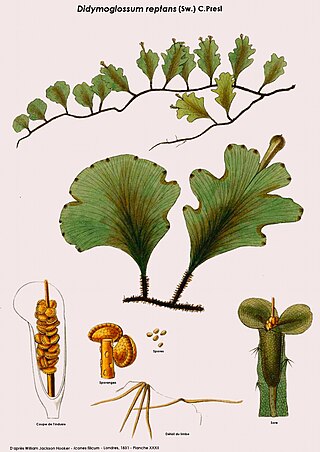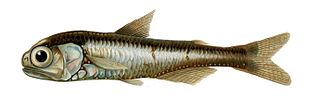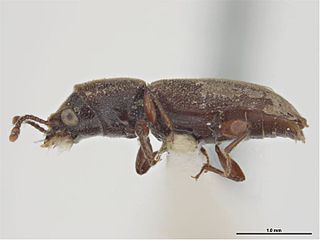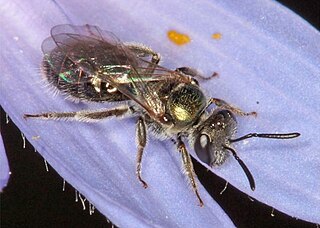
Aextoxicon is a genus of dioecious trees native to southern Chile and Argentina. It is the only genus in the monotypic family Aextoxicaceae, and is itself represented by the olivillo. It is a large evergreen tree native to the forests of the Valdivian temperate rain forests and Magellanic subpolar forests of the Pacific coast of southern Chile, where it forms is a canopy tree in the broadleaf forests. It can reach 15 m tall.

The common furniture beetle or common house borer is a woodboring beetle originally from Europe but now distributed worldwide. In the larval stage it bores in wood and feeds upon it. Adult Anobium punctatum measure 2.7–4.5 millimetres (0.11–0.18 in) in length. They have brown ellipsoidal bodies with a prothorax resembling a monk's cowl.

The spotted quail-thrush is a species of bird in the family Cinclosomatidae. It is endemic to Australia.

Carcinosoma is a genus of eurypterid, an extinct group of aquatic arthropods. Fossils of Carcinosoma are restricted to deposits of late Silurian age. Classified as part of the family Carcinosomatidae, which the genus lends its name to, Carcinosoma contains seven species from North America and Great Britain.

Dipodium punctatum, commonly known as the blotched hyacinth-orchid, is a leafless orchid that is a native to eastern and south-eastern continental Australia. In summer it produces a tall flowering stem with up to sixty pale to bright pink flowers with heavy red blotches. A widespread and common species it is often confused with D. roseum and some authorities regard it as a synonym of D. squamatum.

Dipodium roseum, commonly known as rosy hyacinth-orchid or pink hyacinth-orchid, is a leafless saprophytic orchid found in east and south-eastern Australia. In summer it produces a tall flowering stem with up to fifty pale pink flowers with small, dark red spots. A widespread and common species it is often confused with D. punctatum but has darker, less heavily spotted flowers.

Didymoglossum is a tropical genus of ferns in the family Hymenophyllaceae. It comprises more than 30 epilithic or low-epiphytic species under two subgenera. The genus is accepted in the Pteridophyte Phylogeny Group classification of 2016, but not by some other sources which sink it into a broadly defined Trichomanes.

Piestinae are a subfamily of Staphylinidae.

Gaiadendron is a genus of parasitic shrubs or trees in the family Loranthaceae. It solely comprises the species Gaiadendron punctatum, which is found in North and South America.
Dipodium squamatum is a mycoheterotrophicorchid species of the tribe Cymbidieae.

Myctophum punctatum is a species of mesopelagic fish in the family Myctophidae. Its common name is spotted lanternfish, sometimes spelled spotted lanterfish. It is found in the Northern Atlantic and in the Mediterranean at depths down to 1000m. It is one of the dominant species in midwater assemblages near the Mid-Atlantic Ridge.

Rhizomnium punctatum, also called dotted thyme-moss, is a small species in the genus Rhizomnium.
Priobium punctatum is a species of death-watch beetle in the family Ptinidae. It is found in North America.

Siagonium is a genus of flat rove beetles in the family Staphylinidae. There are about 12 described species in Siagonium.
Cryptorama is a genus of death-watch and spider beetles in the family Ptinidae. There are more than 20 described species in Cryptorama.

Trogoxylon punctatum is a species of powder-post beetle in the family Bostrichidae. It is found in Central America and North America.
Tyloderma punctatum is a species of hidden snout weevil in the beetle family Curculionidae. It is found in North America.

Hypericum punctatum, the spotted St. John's wort, is a perennial herb native to North America. The yellow-flowered herb occurs throughout eastern North America into southern Canada. The process of microsporogenesis carried out by this plant is prone to errors in chromosomal segregation. It has a diploid number of 14 or 16. Insects are attracted to the plant's pollen and the hypericin in the plant's leaves is toxic to mammals.

Lasioglossum exlautum is a species of halictid bee found in Australia.
Lasioglossum punctatum is a species of halictid bee found in Indonesia. It was first described in 1858 as Nomia punctata.















